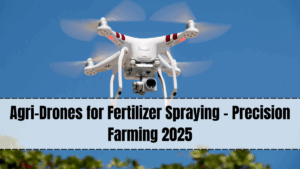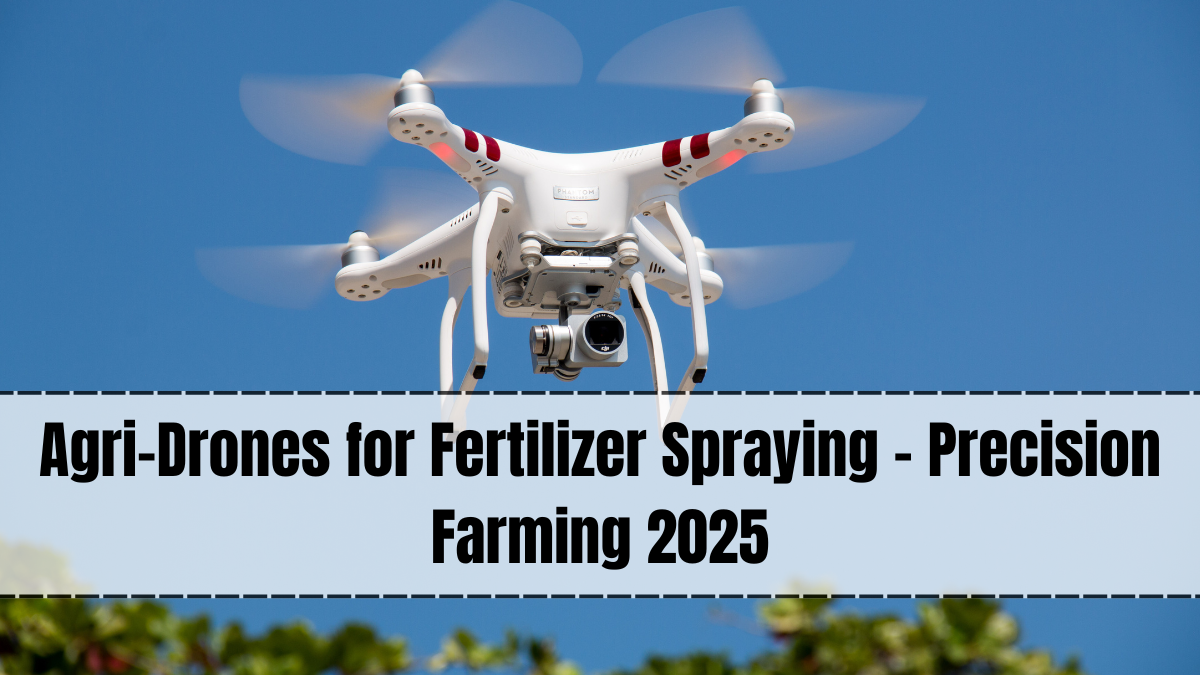In 2025, agricultural technology is advancing faster than ever, and one of the most significant innovations reshaping farming practices is the use of agri-drones for fertilizer spraying. These unmanned aerial vehicles (UAVs) are designed to carry and disperse fertilizers with pinpoint accuracy, ensuring crops receive the right amount of nutrients exactly where and when they are needed. The technology not only boosts crop yields and reduces waste but also saves time, labor, and resources. In the era of precision farming, agri-drones are becoming indispensable tools for both smallholder farmers and large-scale agricultural enterprises.

How Agri-Drones for Fertilizer Spraying Work
Agri-drones are equipped with tanks for liquid or granular fertilizers, nozzles for spraying, GPS navigation systems, and advanced sensors. The process begins with mapping the field using satellite imagery or the drone’s own high-resolution camera. This data allows farmers to identify areas that need more or less fertilizer. The drone then follows a programmed flight path, adjusting spray volume and distribution based on field conditions. This targeted approach ensures that every part of the farm receives the optimal nutrient application, avoiding over-fertilization and minimizing environmental impact.
Benefits for Farmers
-
Precision Application – Fertilizer is applied exactly where needed, reducing waste and improving efficiency.
-
Time Savings – Drones can cover large areas in a fraction of the time it would take with manual or tractor-based spraying.
-
Labor Reduction – The need for manual labor is significantly reduced, addressing workforce shortages in rural areas.
-
Cost Efficiency – Reduced fertilizer usage lowers input costs while maintaining or increasing yields.
-
Improved Crop Health – Uniform application prevents nutrient deficiencies and promotes consistent growth across the field.
Sustainability and Environmental Impact
Overuse of fertilizers can lead to soil degradation, water pollution, and greenhouse gas emissions. Agri-drones help combat these issues by applying precise quantities, ensuring minimal runoff into nearby water bodies and reducing chemical leaching into the soil. Many drones also integrate with soil health monitoring systems, allowing farmers to adjust fertilizer types and dosages based on real-time data. This sustainable approach aligns with global goals for reducing agricultural pollution and promoting climate-resilient farming.
Integration with Precision Farming Systems
Agri-drones are most effective when used as part of a broader precision farming strategy. By integrating with Internet of Things (IoT) devices, weather monitoring systems, and farm management software, drones can operate autonomously and respond to changing conditions. For example, if soil moisture sensors detect low nutrient levels in a particular area, the drone can be dispatched to apply the necessary fertilizer immediately. This real-time responsiveness enhances productivity and reduces the risk of crop loss.
Government Support and Regulations
In 2025, many countries, including India, have introduced policies to encourage drone adoption in agriculture. Subsidies, training programs, and tax incentives are helping farmers afford and operate the technology. Regulatory frameworks now include specific guidelines for agri-drone operations, covering aspects like maximum flight altitude, payload limits, and safety protocols. These measures ensure safe and efficient deployment while protecting the privacy and security of farming communities.
Real-Life Use Cases
In Punjab, large wheat farms are using drones to spray fertilizers during narrow time windows when weather conditions are ideal, improving yields by up to 15%. In Maharashtra, grape farmers have adopted drones for targeted spraying, reducing fertilizer usage by 25% and improving fruit quality. In Karnataka, farmer cooperatives have pooled resources to purchase shared drones, lowering costs and making advanced technology accessible to smallholders.
Technological Advancements in 2025
The agri-drones of 2025 are more advanced than ever, featuring AI-powered navigation, obstacle avoidance systems, and enhanced battery life for longer flights. Some drones now come with interchangeable tanks for applying pesticides, herbicides, and even organic liquid fertilizers, making them multifunctional. Autonomous swarm technology allows multiple drones to work together, covering vast farmlands in coordinated patterns without human intervention. Data collected by drones is also being used for predictive analytics, helping farmers plan future fertilizer applications with greater accuracy.
Challenges and Solutions
Despite the clear benefits, some challenges hinder widespread adoption. The high initial cost of purchasing drones can be a barrier for small farmers, though cooperative ownership models and rental services are helping to address this. Training is essential to operate and maintain drones effectively, and governments and NGOs are stepping in to provide hands-on workshops. Weather conditions can also impact drone flights, but improved weather forecasting and all-weather drone designs are reducing these limitations.
The Future of Agri-Drones in Farming
Looking ahead, agri-drones will likely become even more integrated into everyday farm operations. Advancements in solar-powered charging stations, AI-based crop health diagnostics, and blockchain-based supply chain tracking will further increase their value. In the future, farmers may be able to manage entire crop cycles remotely, from planting to harvesting, using interconnected drone fleets and automated ground equipment. As technology becomes more affordable, agri-drones will play a central role in achieving global food security goals.
FAQs
How much land can an agri-drone cover in a day?
Depending on the model and payload, a drone can cover between 10 to 50 acres per day with precision spraying.
Are agri-drones safe for organic farming?
Yes. Drones can apply organic fertilizers and bio-based sprays with the same precision as chemical products.
Do farmers need a license to operate agri-drones?
In many countries, including India, farmers need to follow aviation authority guidelines and may require registration or certification.
Can drones be used for both fertilizers and pesticides?
Yes. Many drones are designed with interchangeable tanks and nozzles for multiple agricultural applications.
Click here to know more.
